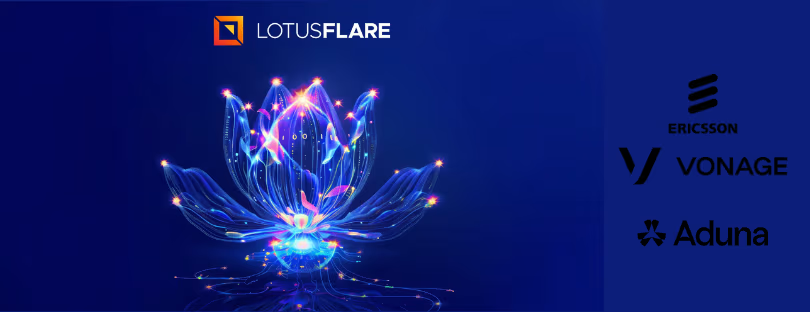
How eSIM Technology Is Quietly Transforming IoT and M2M Communications
If you’ve been following the evolution of connectivity over the last few years, there’s one tiny piece of tech that keeps showing up everywhere — from cars and smart meters to shipping containers and point-of-sale terminals. Yes, the same technology that lets travelers activate mobile data in seconds is reshaping the industrial world too.
We’re talking about eSIM — and its impact on IoT (Internet of Things) and M2M (Machine-to-Machine) communication is much bigger than most people realize. eSIM technology impact IoT and M2M communications
And honestly? It’s only getting started.
Let’s unpack what’s happening, why eSIM matters so much for connected devices, and where all of this is heading next.
eSIM: Not Just for Travelers Anymore
For most consumers, eSIM is still a “travel ”thing”—easy data plans, instant activation, no physical SIM drama, and no airport kiosks.
But behind the scenes, eSIM is becoming the backbone of global device connectivity.
Why? Because IoT and M2M environments need three things more than anything else:
- Scalability—connect thousands or millions of devices without swapping SIM cards
- Reliability—stable, seamless connectivity across networks and regions
- Longevity—devices that stay online for years without physical servicing
Traditional SIM cards simply can’t keep up with how fast companies are deploying sensors, vehicles, meters, robots, wearables, and other connected devices.
With eSIM, however, the equation changes dramatically.
Why eSIM is a Perfect Match for IoT
1. Remote provisioning = No more SIM swaps
Imagine a utility company installing 500,000 smart meters. With physical SIMs, every change — new network, new pricing, new coverage — means rolling trucks out to replace hardware.
With eSIM, updates happen over the air. You push new profiles remotely. No ladder climbing. No physical visits. No downtime.
For IoT-heavy sectors like energy, fleet tracking, or manufacturing, this is a huge cost saver.
2. Global connectivity out of the box
IoT devices often travel — literally.
Cars cross borders. Shipping containers travel by sea. Logistics equipment moves between warehouses, airports, and rail hubs.
Traditional SIM cards tie the device to one operator.
eSIM lets devices switch to the strongest local network, automatically or by policy. Manufacturers can build one device model and ship it globally without adapting connectivity for each market.
This is why automakers were among the earliest eSIM adopters.
3. Better security, baked in
Here’s something we don’t talk about enough: IoT devices are security nightmares if not properly configured.
eSIM helps because:
- It eliminates tampering — nothing to remove or replace
- Profiles can be locked, encrypted, and monitored remotely
- You can revoke or change access instantly if something goes wrong
For industries dealing with payments, healthcare data, or critical infrastructure, these capabilities make eSIM the safer choice.
4. Smaller form factor for smaller devices
IoT devices are shrinking — think tiny wearables, sensors, and trackers.
Physical SIM slots take space. They need openings, trays, connectors, and waterproofing.
eSIM is soldered directly into the board. No moving parts. No ports. That’s why rugged hardware manufacturers love it — fewer weak points.
This is also what enables ultra-tiny asset trackers that last for years on a single battery.
The M2M Side: Consistency, Control, and Scale
M2M isn’t just about sensors sending data — it’s about machines making automated decisions based on that data.
And machines do not tolerate inconsistent connectivity.
A few examples:
- Industrial robots need real-time communication
- Point-of-sale terminals must stay online 24/7
- Fleet tracking needs continuous location data
- Agricultural sensors run in remote, harsh environments
eSIM gives M2M systems something physical SIMs can’t: policy-based network selection.
That means you can program the device to:
- Switch to the cheapest network
- Switch to the strongest network
- Switch when latency crosses a threshold
- Never disconnect during critical operations
This level of connectivity intelligence simply wasn’t possible before.
What This Means for Businesses Deploying IoT
The impact of eSIM is being felt across nearly every sector — but each one feels it differently.
Automotive
Cars are basically rolling computers now. eSIM enables:
- Real-time navigation
- Telemetry and diagnostics
- Emergency systems
- Embedded Wi-Fi
- Over-the-air software updates
Most large automakers have moved to eSIM-first production because the flexibility is unbeatable.
Logistics & Supply Chain
Everything is trackable now: pallets, containers, bags, parcels, assets.
eSIM ensures those trackable devices don’t lose signal mid-journey — especially during cross-border transitions.
This is one of the fastest-growing eSIM verticals.
Manufacturing & Industry 4.0
Factories rely on low-latency, stable connectivity.
eSIM gives them:
- Redundant connections
- Remote management
- Seamless failover
- Secure machine communications
A single hour of downtime in a modern factory can cost millions. eSIM helps protect that uptime.
Smart Cities
Streetlights, traffic sensors, parking meters, waste bins — all connected.
Nobody wants to physically maintain SIM cards in 50,000 streetlamps. Enough said.
Healthcare
Wearables, remote monitoring devices, and ambulances — all benefit from secure, reliable connectivity.
eSIM is helping healthcare providers scale digital care solutions globally without messing with SIM logistics.
Why eSIM Will Dominate the Next Generation of IoT
Here’s the bigger picture: IoT is exploding.
We’re heading toward 30+ billion connected devices globally, and physical SIM cards just don’t scale at that level.
eSIM solves:
- The logistics problem
- The security problem
- The global coverage problem
- The scalability problem
And upcoming standards like iSIM (integrated SIM) will push this even further by embedding SIM functionality directly into the device processor.
Think of iSIM as eSIM’s ultra-efficient younger sibling — even smaller, even cheaper, even more secure.
This will open the door to a whole new class of micro-devices and micro-sensors.
So What’s the Catch?
To be fair, there are challenges:
- Not all operators support full eSIM remote management
- Some regions still rely heavily on traditional SIM provisioning
- Standards are evolving quickly and not always consistently
But overall, the direction is clear: eSIM is becoming the default for connected devices.
The Bottom Line: eSIM Is the Backbone of Future Connectivity
Whether you’re tracking cargo across continents, running a smart building, managing industrial robots, or deploying millions of smart meters, eSIM is making the entire connectivity stack simpler, smarter, and far more scalable.
IoT and M2M don’t just need connectivity — they need dynamic, autonomous, and secure connectivity.
eSIM delivers exactly that.
And for companies building connected products today, choosing eSIM isn’t a “future move” anymore — it’s quickly becoming the baseline.
Here are some indicative prepaid eSIM card prices for Europe from a few of the best eSIM companies:




















